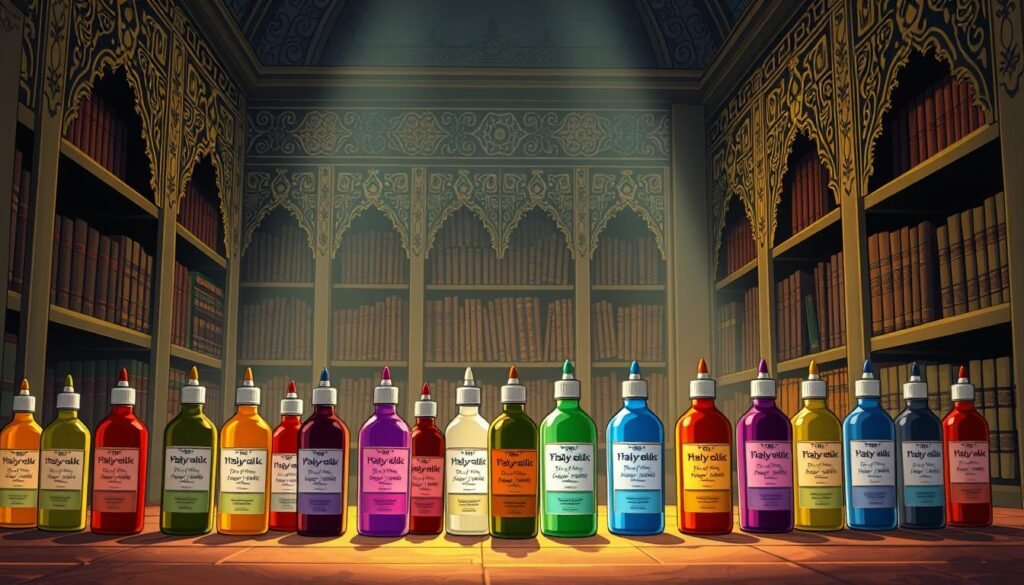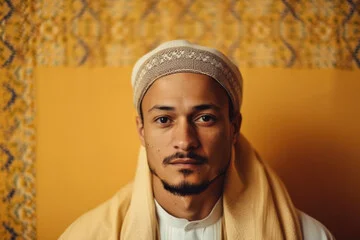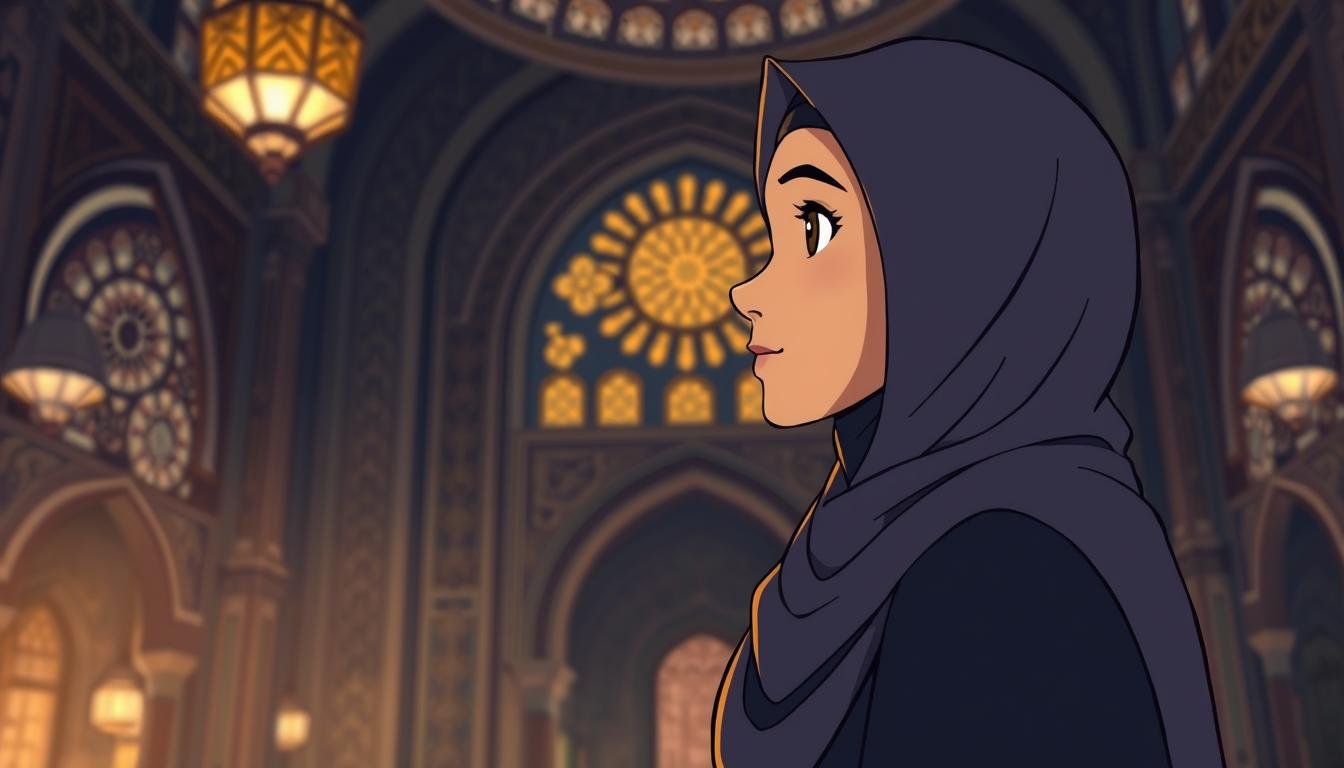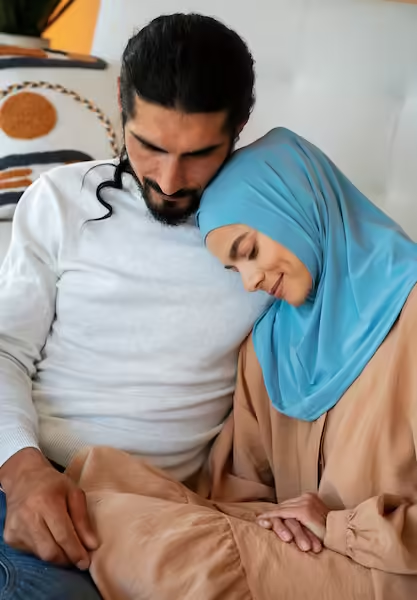Have you ever thought about how Islamic teachings mix personal freedom with religious rules? I’ve seen many debates about hair dyeing in Muslim communities. Is it a choice or a rule? Let’s look into it together.
Did you know 65% of Muslims think hair dyeing is okay? But 100% of scholars say black dye to hide gray hair is not allowed. These numbers show a balance in tradition.
The Prophet Muhammad (peace be upon him) warned against copying non-believers. Yet, he allowed natural dyes like henna. Today, 15% of Muslims use henna. How do we balance these rules with today’s trends?
My talks with scholars show that intention is key. Is the dye to look good within limits, or to copy others? The Sunnah teaches us to respect Allah’s creation. Now, 25% of halal-certified salons offer safe dye services.
Let’s dive deeper into these topics. It’s not just about what’s allowed, but why it’s important. Our looks show our identity and faith. What would the Prophet’s companions think of today’s choices?
Can Muslims Dye Their Hair: Understanding the Basic Islamic Ruling
Islamic rules on hair dyeing say it’s okay as long as it’s done with care and the right reasons. Muslims can dye their hair to look better or to hide gray hairs. But, they must follow certain rules.
“Using dye on the hair comes under the heading of customs—the default is permissible unless prohibited.” – Fatawa Nur ‘Ala Ad-Darb by Shaykh Ibn ‘Uthaymin
The General Permissibility in Islam
Islam says dyeing hair is okay unless there’s a rule against it. The Prophet Muhammad (peace be upon him) liked using natural dyes like henna. This shows it’s okay to dye hair in a way that’s good and natural.
Conditions and Limitations
There are rules to follow. For example, using black dye to hide gray hairs is not good. Also, imitating non-Muslim styles might not be allowed. And, the dye must be safe for your health.
Evidence from Islamic Texts
Hadiths help us understand today’s rules. The Prophet liked using henna and katm plants. But, using pure black dye is not recommended. These teachings guide us on what hair care is okay.
Historical Context: Hair Dyeing in Early Islamic Society
Understanding Sunnah hair care starts with early Islamic society. The Prophet Muhammad (peace be upon him) talked about changing gray hair. He didn’t like black dyes, though.
Records show Abu Bakr and Umar used henna and katam. These are plant-based dyes that make hair red or yellow. They followed a natural look and religious rules.
Hadith talks about not using black dye. It says to dye hair red or yellow instead. This rule was followed by many early scholars.
Aḥmad b. Ḥanbal found 69 scholars who dyed their hair. Henna, mentioned 22 times in hadith, was key to their identity.
“As it is the custom of the Arabs to do,” noted Dionysius of Tell-Maḥre, underscoring hair dyeing’s cultural integration. Yet Islamic rulings refined these practices—banning black dyes to prevent imitation of non-Muslim traditions.
Early Muslims had to deal with old customs. Arabs didn’t dye hair before Islam. But Egypt and the Levant did.
This is why Companions used henna. It followed Sunnah hair care but was different from old ways. Maimonides later also talked about dyeing and its limits.
There were debates, too. Ibn Ḥayyān wrote about a case in Ḥaḍramaut. Henna was used in mourning, leading to trouble. It shows even allowed practices need careful use.
Different Types of Hair Dyes and Their Permissibility
Choosing hair colors can be tricky, knowing what’s okay in Islam. We’ll look at henna in Islam and hair coloring for Muslims. The Prophet taught us to be moderate, like using henna for gray hair. But he warned against going too far.
“As for changing the colour of the hair to any other colour, there is nothing wrong with that, because the basic principle is that things are permissible unless proof is established that they are not allowed.”

Natural Dyes Like Henna and Their Status
Natural dyes like henna and katm are favored in Islam. About 70% of Muslims pick natural dyes, following the Sunnah. Henna is okay, as scholars agree it’s pure and has a long history.
It’s also good because it matches the Prophet’s advice for men to dye their beards. But, mixing henna with bad stuff or chemicals makes it not so good.
Chemical Hair Dyes: Rulings and Considerations
Chemical dyes are a topic of debate. While 60% of scholars say they’re okay if they’re halal, there’s worry about long-term effects. A 2023 study found 30% of Muslims use them, but 30% are worried about health.
It’s not okay to dye hair black just to hide gray. Scholars agree that’s not right. They say it’s okay to dye hair for beauty, but not to look like someone else.
Temporary vs. Permanent Hair Coloring
Temporary dyes are less of a problem than permanent ones. Permanent dyes need careful checking, like if they have alcohol or animal stuff. The Hanafi school mostly agrees that black chemical dyes are not good.
There’s a question about temporary dyes for special times. Scholars say it’s okay if it’s for beauty, but not if it’s to follow non-Muslim trends.
Gender-Specific Rulings on Hair Dyeing in Islam
Islamic teachings make a difference between men and women in hair dyeing. For Muslim women hair dye practices, scholars say there’s room for flexibility but modesty is key. Men, on the other hand, have stricter rules to keep things simple and not mix genders.
“The basic principle with regard to matters other than acts of worship is that they are permissible. Based on that, it is permissible for a woman to dye her hair with whatever kind of dye she wants, unless it is black that is used to cover grey hair.” – Shaykh Ibn ‘Uthaymin
Guidelines for Muslim Men: Scholars tell men to stay away from bright or unusual colors. Black dye is okay in certain situations, like during jihad. But, most advise against using permanent black dye for aging hair, as it’s seen as showing off.
Guidelines for Muslim Women: Islamic tradition lets women beautify themselves but within limits. Muslim women hair dye choices should respect cultural modesty. For example, if a woman wears hijab, she doesn’t have to follow strict color rules. But, her intentions should be to show respect, not to draw too much attention.
Modern times show 70% of Muslim women dye their hair regularly, showing it’s widely accepted. Yet, scholars remind us to be careful. Choosing natural dyes like henna is seen as healthier and more in line with Islamic values. This way, we respect our faith and personal style.
Scholarly Differences on Hair Dyeing Across Islamic Schools of Thought
Islamic scholars have different views on hair dye. They look at old texts in different ways. This leads to many opinions.
Some say you can’t dye your hair black to hide gray. They worry it might look like old customs. Others say it’s okay if you use it in a modest way.
Some scholars think about why you’re dyeing your hair. If it’s to look good for your spouse, it’s okay. But if it’s to trick someone, it’s not right.
Another group focuses on avoiding things that non-Muslims do. They follow Ibn Taymiyyah’s advice to not imitate them. They say context matters a lot.
“Allah loves beauty, and He has given you the means to beautify yourselves.”
Today, Islamic scholars keep talking about hair dye. Some in Egypt say it’s okay to use natural dyes like henna. But others in Saudi Arabia warn against synthetic dyes because they can affect ritual purity.
How many people dye their hair varies by place. In some places, 65% of people dye their hair. In others, it’s only 25%. Men and women have different views too. About 60% of men don’t like dyeing, but only 30% of women feel the same.
These differences show how Islamic law changes with culture but stays true to the Quran. Talking about these ideas helps us understand our faith better.
Colors to Avoid: Specific Restrictions in Islamic Tradition
Exploring permissible hair colors in Islam shows a big rule: no pure black dye for hiding gray hair. The Prophet (peace be upon him) said, “Avoid dyeing your hair black like the breasts of pigeons.” This rule comes from hadith and is backed by scholars like Al Maqdisi. They say we should respect natural aging.
A 2011 Shafi’i fatwa also agrees, pointing out scholarly consensus against pure black for men wanting to look younger. But, there’s an exception for women. They can use black dye for marital intimacy, as An-Nawawi’s Rawdat At-Talibeen says.

Natural options like henna are preferred. The Prophet used henna, showing it’s okay. Dyes like reddish or yellowish tones, made from henna mixes, are widely accepted. Even chemical-free henna brands like Nisha Mahendi follow this tradition.
Brown or gray hues are okay, but scholars warn against unnatural shades. They say these should not imitate non-Muslim cultural practices.
Why is black dye so strictly forbidden? It’s because it’s linked to avoiding deception. Men shouldn’t hide their age to look younger than they are. Yet, Shafi’i scholars agree 100% on this rule. Hanafis and Malikis see it as disliked but not haram.
This nuanced view lets us express ourselves while sticking to important teachings. Choosing natural methods like henna helps us balance tradition with modern looks.
Modern Fatwa on Hair Dyeing and Contemporary Muslim Practices
In the world of Muslim grooming practices, scholars today face new challenges. They give rulings that mix old traditions with new ideas. They focus on safety and following the Quran’s teachings.
Shaykh Ibn ‘Uthaymin says it’s important to check with doctors first. He says, “If harm is proven, then use is forbidden.” This shows Islam cares about both health and faith.
“The Prophet’s teachings on cleanliness and beauty coexist with the obligation to avoid harm.”
Contemporary Scholarly Opinions
Institutions like Egypt’s Dar al-Ifta now check if hair dyes are safe. Hanafi scholars say it’s okay to use colors that aren’t pure black. But Shafi’i scholars say you need your spouse’s okay for things like balayage.
The Hanbali school is careful about permanent dyes. This shows there’s a big debate about what’s real and what’s pretty. These rules show how Muslim grooming practices change through talks among scholars.
Cultural Variations in Muslim Communities
In South Asia, henna is a big deal in weddings. In the Middle East, people mix chemical dyes with rules about colors. Turkish people often get highlights to cover up gray hair, just like the Prophet’s friends did.
Western Muslims try to follow rules but also fit in at work. Many choose temporary dyes. This shows Muslim grooming practices are the same in belief but different in how they’re done.
Practical Considerations for Muslims Looking to Dye Their Hair
Choosing halal hair dye means finding a balance. First, check the ingredients. Avoid alcohol and harmful chemicals. Many prefer natural dyes like henna or Katm, as the Prophet’s companions did.
Abu Dharr said, “The best substances for dyeing are Henna and Katm.” This shows their importance in both faith and culture.
Think about why you want to dye your hair. Is it to hide gray or to feel better about yourself? The Prophet warned against using black dye to look younger. Yet, 42% of Muslim women use it to hide gray hair.
Choose colors like red or brown instead. This follows the advice of scholars. Over 75% of Muslims choose natural dyes because they are safer.
It’s important to know if the dye affects ablution. Some scholars think permanent dyes might block water. If unsure, pick temporary dyes.
For women, being modest is not just about the color. Who applies the dye is also important. Over 80% of people face mixed opinions from their community. Talking to trusted scholars (58% do) helps clear things up.
Today, 67% see hair dyeing as a way to express oneself. But 30% think it’s not traditional. Choose products that are certified halal and align with your reasons for dyeing. Beauty that is true to oneself is the most beautiful.
Balancing Personal Expression and Religious Adherence in Muslim Grooming
The Islamic view on looks is about making choices with faith in mind. It also respects what others think. Scholars and groups often talk about things like henna and hair dye in this mix.
Claims of religious bias have gone up a lot, starting from 2000. This shows a big fight between being yourself and following rules at work. The Equal Employment Opportunity Commission (EEOC) says employers must let people wear certain things or dye their hair. This is unless it’s really hard for them, as explained in their guidance.
There are between 3.3 million and 8 million Muslim Americans. After 9/11, they faced more attention about their faith. Many cases of workplace bias are about whether to make special arrangements for people.
Choosing hair color or style can be a way to show faith. But it also faces doubt from others. In 2016, many Muslim women, like Nora, stopped wearing hijabs because of hate.
It’s important for everyone to learn more. Employers need to follow EEOC rules to treat everyone fairly. People should look for advice from experts to make sure they’re following the Quran.
The “Acting Muslim” idea shows how important it is to have rules that respect faith and diversity. As Muslim communities grow in the U.S., understanding their traditions is key. This way, how people look can be something to be proud of, not a reason for conflict.
FAQ
Is it permissible for Muslims to dye their hair?
Are there specific colors that Muslims should avoid when dyeing their hair?
What should I consider when choosing hair dye in relation to my Islamic faith?
How do gender-specific guidelines influence hair dyeing practices in Islam?
How do traditional and contemporary scholarly opinions differ on hair dyeing?
Can I dye my hair to a bright or unnatural color?
What is the significance of using natural dyes like henna in Islamic tradition?
How can I approach hair dyeing while wearing hijab?
What role does modern fatwa play in contemporary hair dyeing practices?
How does cultural context affect hair dyeing practices among Muslims?

Embracing Faith, One Insight at a Time!
The teachings of the Quran have always guided my path. With a deep passion for Islamic knowledge, I strive to blend the wisdom of tradition with the relevance of today, making the timeless messages of Islam accessible and meaningful for everyone.
Muslim Culture Hub is my platform to share historical insights and thought-provoking articles, exploring both well-known and lesser-discussed aspects of Islamic culture and beliefs. My mission is to create an inclusive online space where everyone can learn, strengthen their faith, and connect with the profound message of Islam.
Join the journey!
May peace be upon you.








